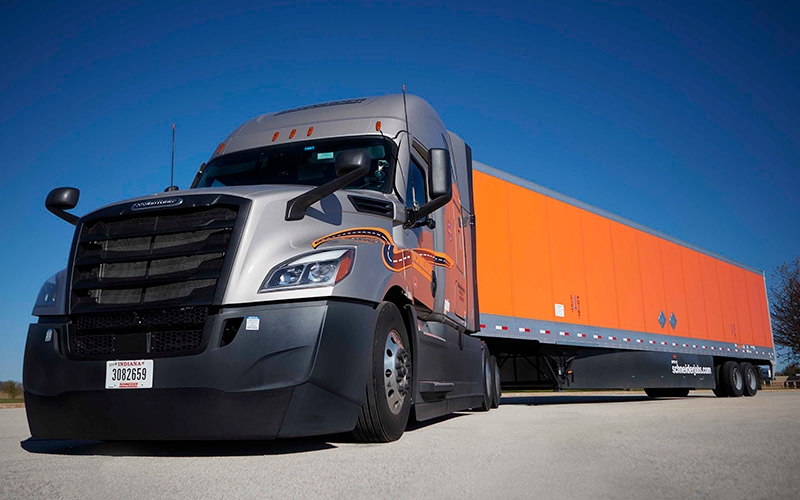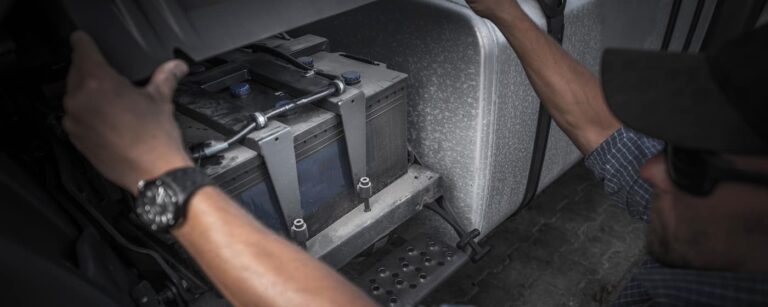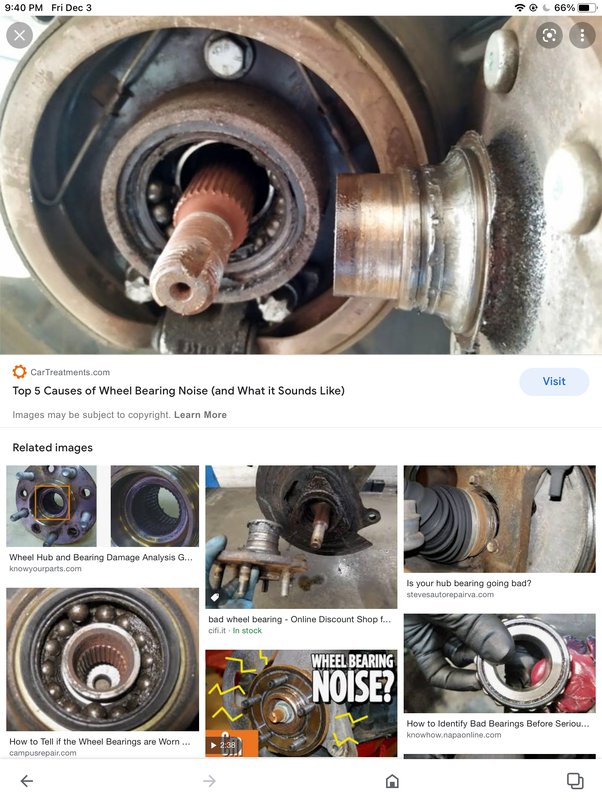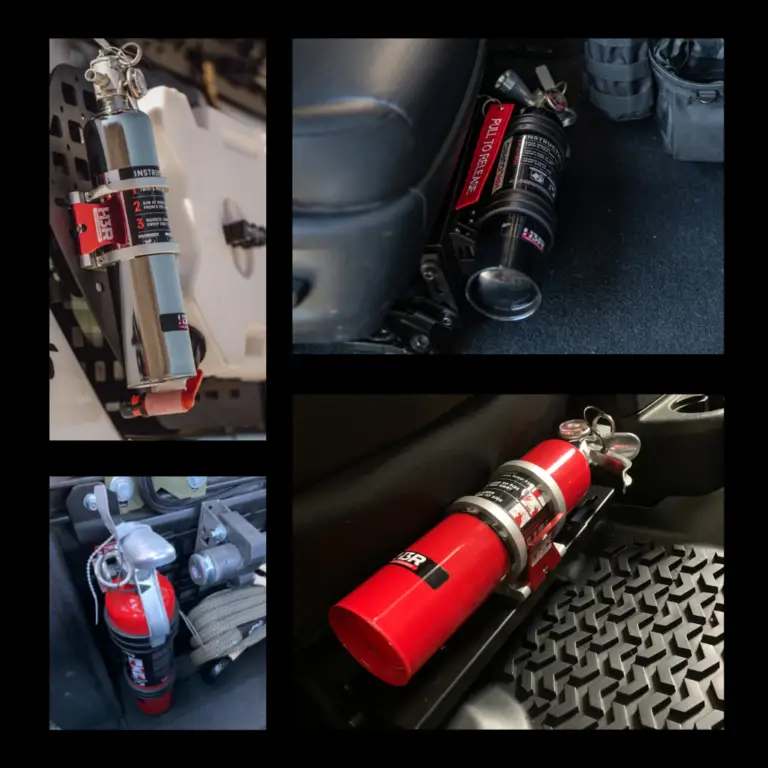
Semi trucks are mainly manufactured in the United States, with major production centers in states such as Indiana, Ohio, and Texas. They are also produced in other countries like Sweden, Germany, and Japan, with global distribution.
The semi truck, also known as a tractor-trailer or 18-wheeler, is an essential part of the transportation industry, hauling goods across states, countries, and continents. These powerful machines are the backbone of logistics and play a crucial role in keeping supply chains moving.
With their origins deeply rooted in the industrial revolution, semi trucks have evolved over time to become a vital component of modern commerce, connecting businesses and consumers across the world.
Navigate As You Want: [show]
The Origin Of Semi Trucks
The birth of the semi truck can be traced back to the late 1800s, with the advent of the steam-powered wagon. This early development revolutionized the transportation industry, allowing for the efficient movement of goods over long distances. Over time, these steam wagons evolved into motorized vehicles, with the first gasoline-powered semi truck being introduced in the early 1900s. This marked a significant turning point in the evolution of semi trucks, as it offered enhanced speed and maneuverability.
As the demand for freight transportation grew, so did the need for innovations in semi truck design. In the mid-20th century, the introduction of diesel engines and air brakes further improved the efficiency and safety of these vehicles. Additionally, advancements in suspension systems and aerodynamics helped enhance fuel efficiency and reduce carbon emissions.
Today, semi trucks continue to evolve with the integration of advanced technologies such as GPS navigation, real-time monitoring systems, and automated driving capabilities. These innovations aim to increase efficiency, reduce fuel consumption, and improve overall safety on the roads.
The Impact Of Semi Trucks
Semi trucks, also known as 18-wheelers or tractor-trailers, play a vital role in the transportation industry. They are responsible for moving a large percentage of goods across the country, contributing significantly to the economy. However, their impact is not limited to just commerce; semi trucks also have environmental implications. The fuel efficiency of these vehicles and the emission standards they adhere to play a critical role in reducing the carbon footprint of the logistics sector. Both the economic and environmental impacts of semi trucks are crucial factors to consider in the modern world.
Key Components Of A Semi Truck
Semi trucks are complex vehicles that are made of several key components. The engine and powertrain are essential for providing the necessary power and torque to move the truck and its load. The trailer and cargo are the main carriers of goods, making them crucial elements of the semi truck. Safety features such as braking systems, airbags, and collision avoidance technology work together to protect the driver and surrounding vehicles. These components make up the foundation of a semi truck’s functionality and efficiency.

Credit: www.durabakcompany.com
Regulations And Standards
When it comes to regulations and standards, the licensing and requirements for semi trucks play a crucial role. Weight and size regulations ensure that trucks on the road are within the acceptable limits to maintain safety. These regulations specify the maximum weight and dimensions a truck can have, including the load it can carry. Compliance with these regulations is essential to prevent any damage to infrastructure or accidents on the road. Safety regulations focus on ensuring that semi trucks are equipped with the necessary safety features to protect both the driver and others on the road. These regulations cover areas such as braking systems, lighting, reflective devices, and visibility requirements. By adhering to these regulations, semi trucks can contribute to a safer transportation system.
Future Of Semi Trucks
Semi trucks, also known as tractor-trailers or lorries, play a crucial role in the transportation industry. They have evolved significantly, thanks to advancements in technology. The future of semi trucks looks promising with the introduction of innovative features and improvements.
The first major advancement contributing to the future of semi trucks is technology. With the integration of various features, semi trucks are becoming safer and more efficient. For instance, the development of autonomous driving technology ensures enhanced road safety by minimizing human error. Additionally, it enables trucks to optimize fuel consumption, reducing carbon emissions and improving environmental sustainability.
Another significant aspect influencing the future of semi trucks is the advent of alternative fuels and energy sources. Electric and hydrogen-powered semi trucks are gaining popularity as alternatives to traditional diesel trucks. These greener options have lower emissions and contribute to reducing our carbon footprint.
Overall, the future of semi trucks is promising and driven by advancements in technology. From autonomous driving capabilities to alternative fuels, these innovations are reshaping the transportation industry and paving the way for a more sustainable and efficient future.

Credit: www.caranddriver.com

Credit: www.reuters.com
Frequently Asked Questions On Where Does Semi Truck Come From
What Is The History Of Semitrucks?
Semitrucks, also known as semi-trailers, have a long history dating back to the late 19th century. They were originally developed as a way to transport goods over long distances efficiently. Over the years, semitrucks have evolved to become an integral part of the transportation industry, playing a crucial role in moving goods across the country.
How Are Semitrucks Manufactured?
The manufacturing process of semitrucks involves several steps, including designing, engineering, and assembly. It starts with the creation of a detailed design plan, which is then used to fabricate the various components of the truck. These components are then assembled together, and the necessary electrical and mechanical systems are installed.
Finally, the semitrucks go through rigorous quality control checks before they are ready to hit the road.
What Are The Key Components Of A Semitruck?
A semitruck has several key components that allow it to function efficiently. These include the engine, transmission system, axles, suspension system, braking system, and the trailer itself. Each component plays a vital role in the overall performance and functionality of the semitruck, ensuring a safe and smooth journey for both the driver and the cargo being transported.
Conclusion
In this blog post, we explored the origins of semi trucks, revealing the fascinating history behind these powerful vehicles. From their humble beginnings as modified Ford Model Ts to the technologically advanced machines seen on the roads today, semi trucks have come a long way.
Understanding their roots gives us a deeper appreciation for the role they play in our modern transportation industry. So the next time you see a semi truck on the highway, remember the journey it has taken to become the workhorse it is today.




